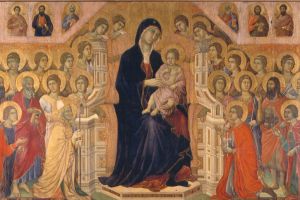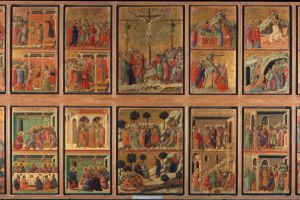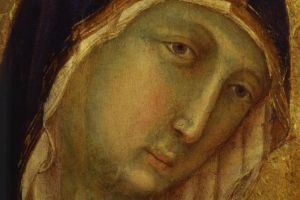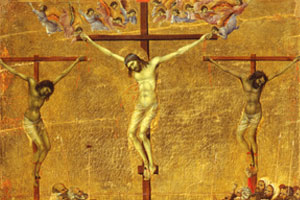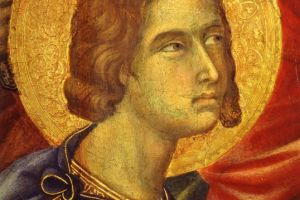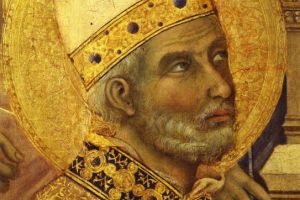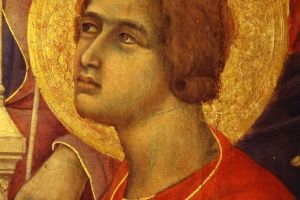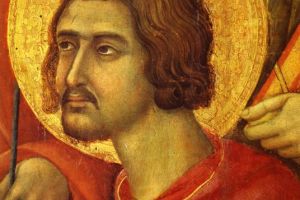The Cathedral of Santa Maria Assunta
Duccio's Maestà
Anyone who entered the cathedral before 1506 would have been able to admire on the high altar the astounding Maestà, the popular name for The Virgin and Child Enthroned with Saints and Angels, painted by Duccio di Buoninsegna and now housed in the nearby Museo dell’Opera. On 9 June 1311, after a solemn procession in which all the people of Siena festively took part, the work was placed on the high altar of the cathedral. Chroniclers of the time called it “the most beautiful painting that was ever seen or made,” and the Sienese saw in it the expression of their identity.
The altarpiece, painted on both sides, originally standing on a predella and topped with a crown, the panels of which are now dismantled and in part on display in the same room in the museum, is dominated frontally by the picture of the Virgin and Child sitting on a throne, surrounded by the heavenly court of angels and Saints. The figure of Mary is significantly larger than the others and stands out against the gold background thanks to the deep blue of her cloak. Majestic in size, the altarpiece captured attention from the very door of the cathedral because of the light streaming through the cathedral windows that made the gold ground shine brightly. The eye immediately went to the liturgical center of the church, the high altar, where Christ’s sacrifice is perpetuated in the celebration of the . . .
